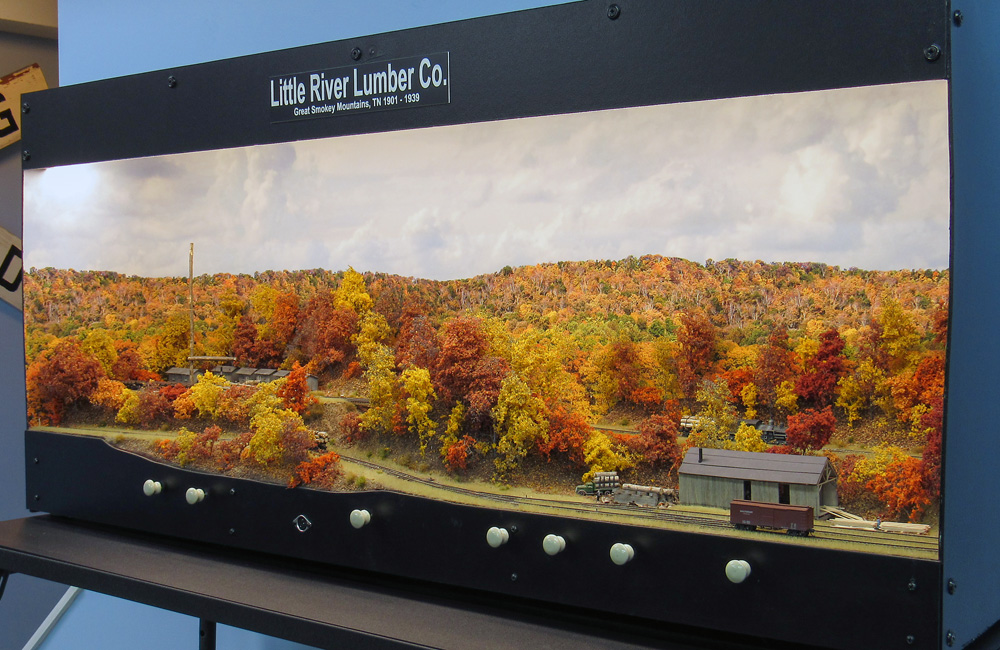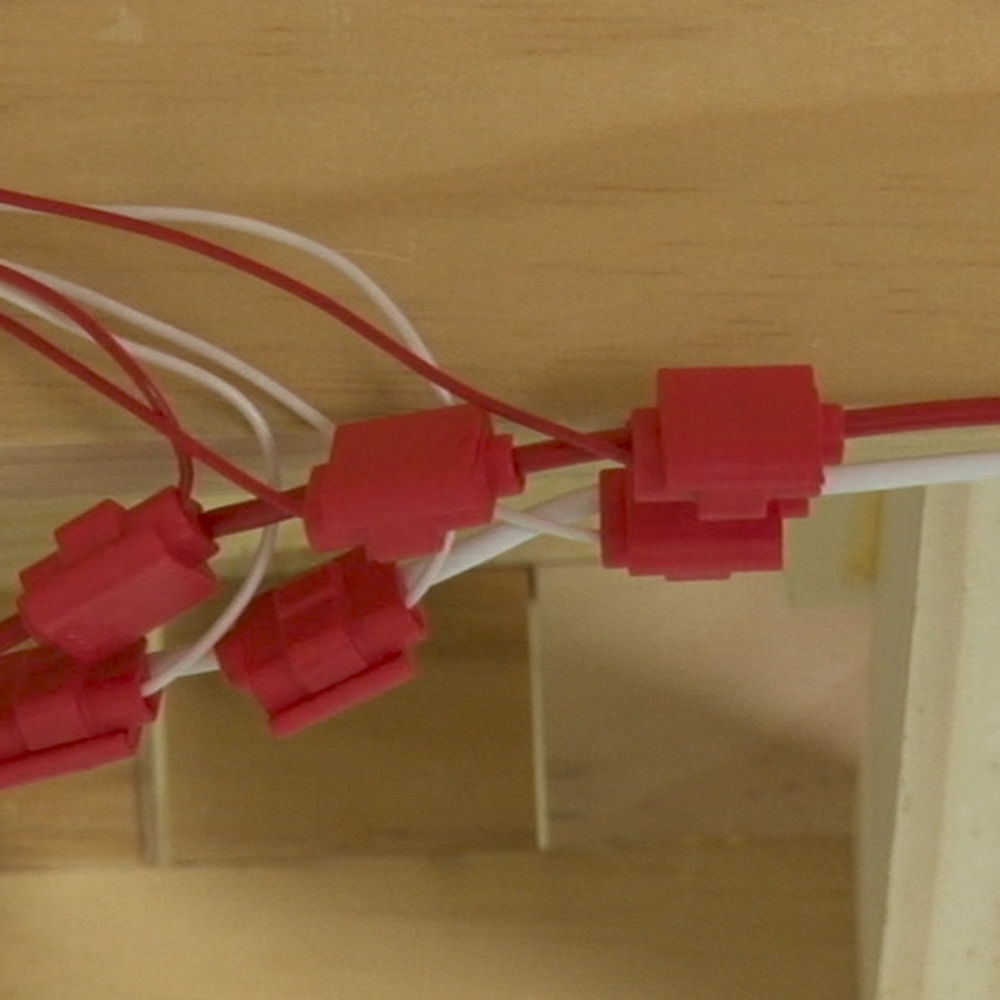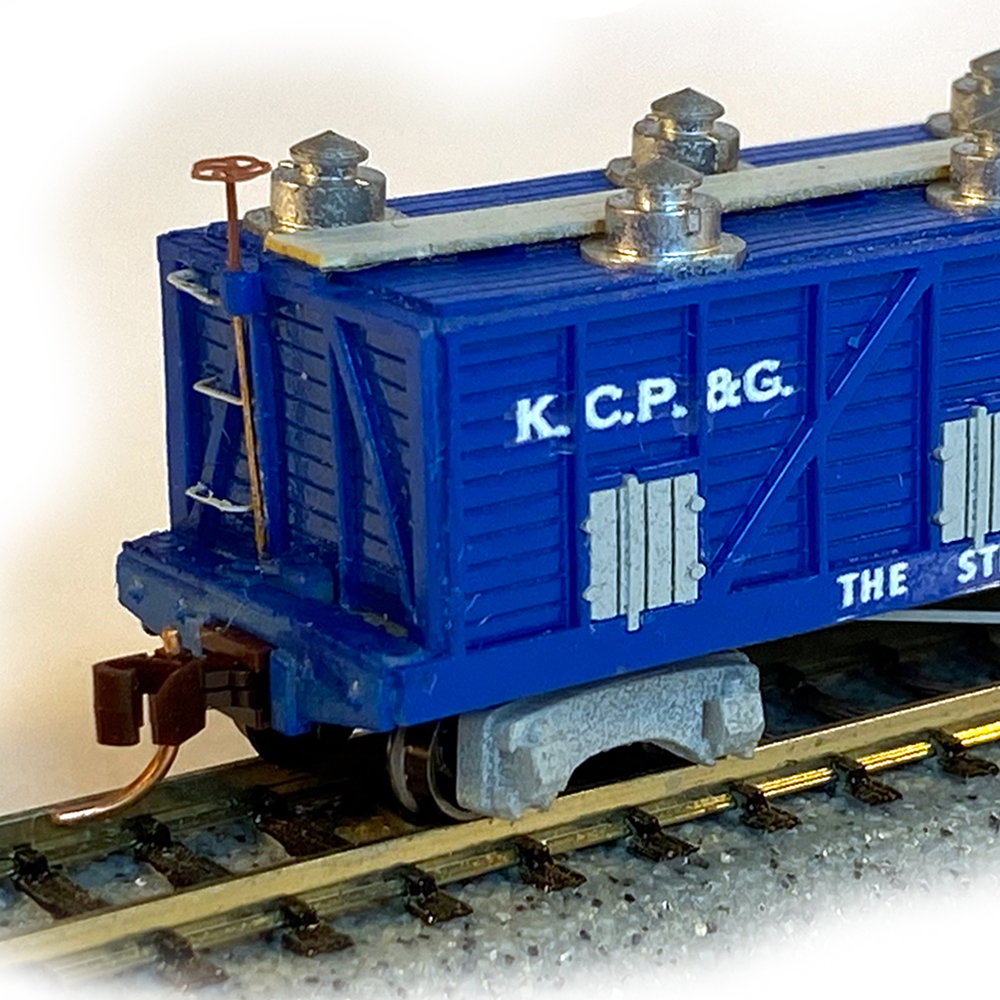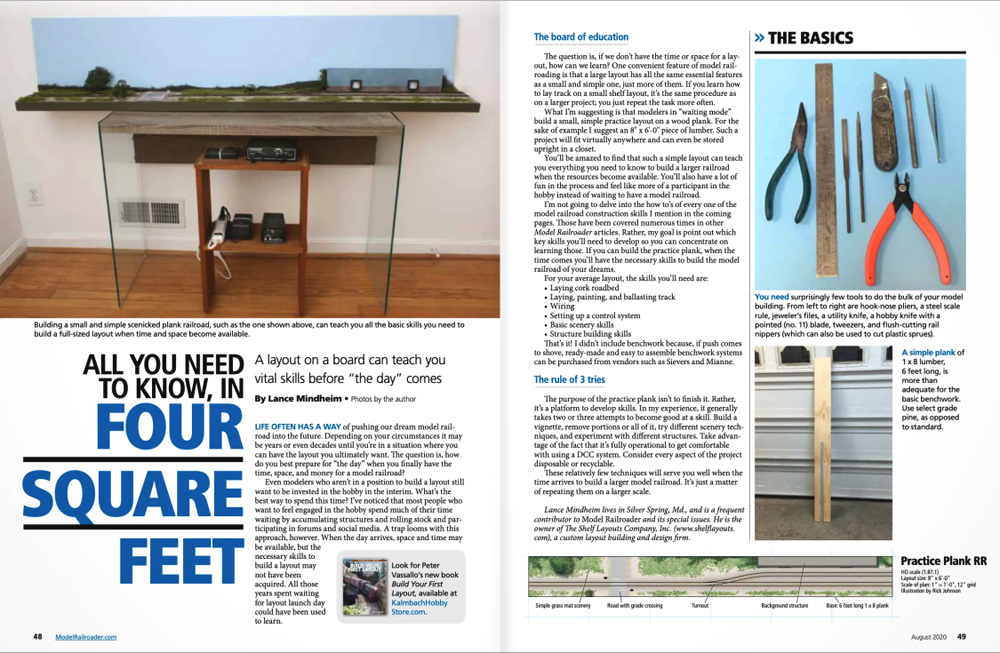
Q: I am in a decision mode as to what’s the best industry for a small shelf layout. I’m considering either lumber or grain. My shelf is 14″ x 6-0″. Also, what freight cars would be needed for each industry? Thanks. — Bill M.
A: You didn’t say what scale you’re modeling in, but 14″ x 6′-0″ isn’t much space for any scale. The grain industry might be doable in that size in N scale, but if you’re modeling in HO, that industry would require more space to model convincingly. The most you could fit on a narrow 6-foot shelf would be a single granger town with a grain elevator, a secondary industry like a feed mill or oil dealer, a station with a house track, and a double-ended siding. You could switch the industries and team track, which might provide a half-hour’s operating fun, but you wouldn’t have anywhere for a train to go unless you add on a removable staging track.
If you choose to model a lumber line, though, your options expand. Logging railroads could use tighter curves, sharper turnouts, steeper grades, and smaller rolling stock than common-carrier roads. Many such lines were narrow gauge, which improves those metrics even more. Even in HO scale, you could take advantage of this to design a layout with a steeply graded switchback leading from a logging camp to a sawmill. The switchback would increase not only the length of your run, but also the number of maneuvers needed to navigate it, increasing the layout’s operating fun. The steep grade and the length of the switchback will limit the length of your trains, which will require you to run more trains to move the same amount of freight. And the vertical separation between the sawmill and logging camp will make the two ends of the line feel farther apart than they actually are.
You don’t even need to allocate a lot of layout space to the sawmill itself. All you need is an unloading track next to the edge of a log pond. The sawmill itself can be inferred to be just off the edge of the layout. That might even let you fit in two log camps, one at each end of the switchback.
For track planning inspiration, check out Chuck Yungkurth’s Gum Stump & Snowshoe, a compact shelf layout that features a switchback that crosses over itself. Just add a mountainous backdrop and a bunch of trees, and you’re good to go. It was originally published in our April 1966 issue, but continues to inspire other layouts since then, including Bob Smaus’ expanded version in our October 1989 issue and, more recently, Sam Foster’s Owl Cove Lumber Co. in August 2024’s issue.

As for the rolling stock, that depends not only on your choice of industry for a small shelf layout, but also your era. A steam-powered logging line would be simple; a geared steam locomotive like a Shay or Climax, a handful of cutoff log bunks or skeleton cars, and maybe a bobber caboose. For variety, add a boxcar for the occasional delivery of logging equipment and a combine to carry workers and their supplies up to the camp. For a more modern operation, switch the motive power to a short center-cab diesel like a General Electric 44-tonner, upgrade the log cars to more modern ones, and lose the caboose.
To model the grain industry, before the 1960s, you would need boxcars fitted with nailed-in wood (early) or heavy paper (late) grain doors. For motive power, I’d suggest a 2-8-0 Consolidation (early) or 2-8-2 Mikado (late). In the 1960s, covered hoppers came along. By then, motive power would be a road switcher like an EMD GP9, Alco RS3, or later, a GP35 or GE Dash-8.
Good luck building your model railroad!
Send us your questions
Have a question about modeling, operation, or prototype railroads? Send it to us at AskMR@ModelRailroader.com.














CEFinkJr@TX.RR.com
Faced with similar issues, I’m leaning toward a meat packing facility with the slaughterhouse and its stock pens on one side of the main and single passing track/yard and a coal burning boiler house on the other. Loaded stock cars, “hides only” empty box cars, pre-iced refrigerator cars, and loaded hoppers would be set out on the yard track for the dedicated switcher to spot and replace with outbound empty stock cars, loaded refrigerator cars and empty hoppers. Might even be able to sneak a leather maker in near the boiler house to pre-process some of the “green” hides, keeping some “hides only” cars going back and forth across the main and allowing pre-processed hides to be shipped in non-dedicated box cars (another car type for empty in/load out movement).
I would suggest something like a cotton mill to fit in a small space. A cotton mill structure would be perfect as a flat backdrop for that size layout and just about appropriate size. A switchback would serve the mill along the whole length. A single spur would serve a depot and perhaps a lumber yard or farm supply since cotton mills and agriculture went together. The whole thing served from a drop-down staging track much as used in the Southbound. Be a great module on its own or part of a larger layout.